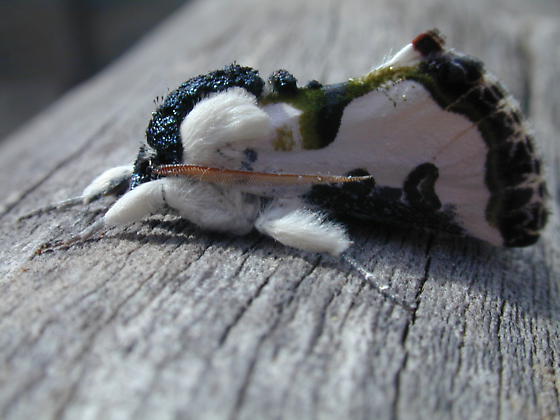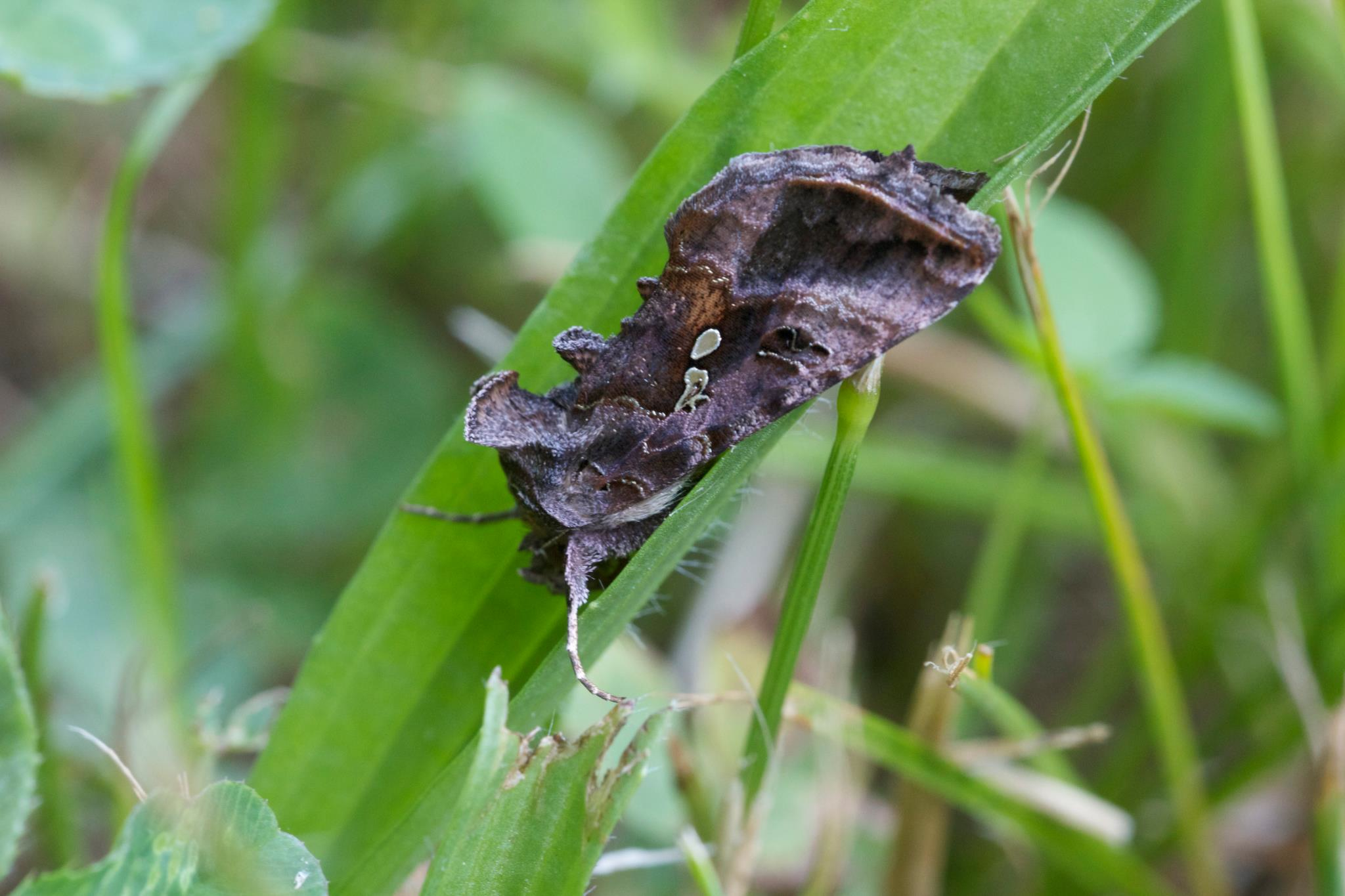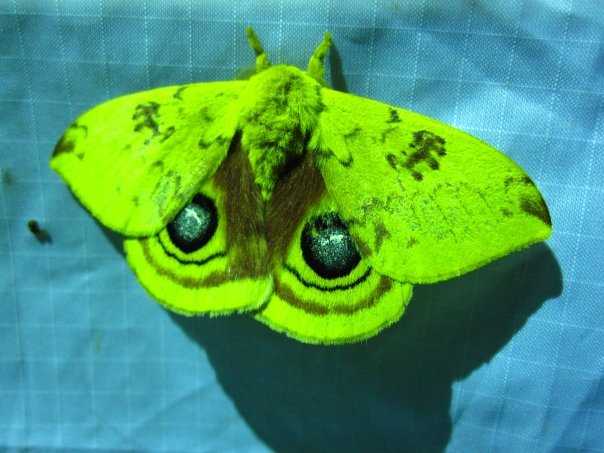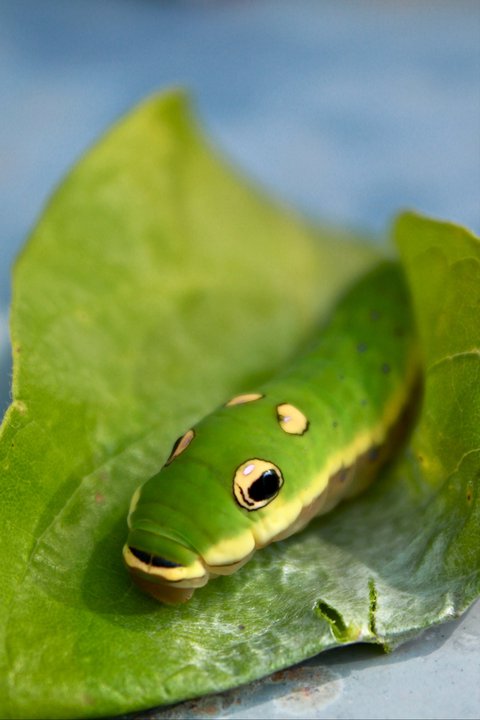Moths and other lepidoptera sometimes go to extreme measures to avoid being detected by predators and parasites. This New York Times article details a few predator avoidance strategies that moths employ to avoid being caught, eaten, seen, or parasitized.

(c) Yokobachi via Bugguide
Some moths use mimicry to trick predators into thinking they are poor food resources such as dead leaves or even bird poop.

(c) Elena Tartaglia
Have you ever seen a moth with shiny, iridescent wing patches? Entomologist Dan Jantzen thinks these flashes of color accentuate the speed of moths’ flight, sending the message to birds, Dr. Janzen suggests, “Don’t even try to catch me.”

(c) Elena Tartaglia

(c) Elena Tartaglia
Other lepidoptera mimic predators themselves by having giant eyespots (like Io moths) or by having caterpillars that look like snakes (like many swallowtail butterflies).